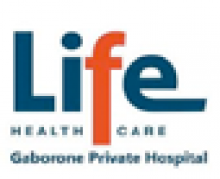Normal body temperature, when measured by an oral thermometer, is between 36.5°C and 37°C. Fever is when body temperature is over 37°C (37.8°C or more when measured rectally).
In an adult, the level of fever generally reflects the severity of the illness causing it. In a child, however, this is not necessarily the case. A child with a mild cold may have a temperature of 40°C, while a child with a serious illness - bacterial pneumonia, for example - may have a temperature lower than that.
In a newborn, the body's temperature control is not yet well developed. As a result, signs other than fever - poor appetite, lethargy, irritability - may be earlier indicators of an infection and are more helpful than temperature in assessing a newborn's condition.
What causes a fever?
A fever can be caused by a wide variety of factors. Dehydration, overexertion, mosquito bites, bee stings, allergic or toxic reactions and viral or bacterial infections are just a few. A fever of unknown origin is a condition defined as an elevated temperature lasting for three weeks or more without an identifiable cause.
Drugs to lower fever
- Paracetamol (found in Tylenol, Panado and other over-the-counter medications) is a drug that helps lower fever.
- Paracetamol is also an analgesic (pain reliever), so it eases the discomfort and body aches that often accompany fever.
- Note: In excessive amounts, this drug can cause liver damage. Be careful not to exceed the correct dosage.
- Ibuprofen (Advil, Nuprin and others) is another fever-reducing medication that relieves mild to moderate aches and pains.
- Be sure to take the medication with food to prevent irritation of the stomach.
- Ibuprofen is available in liquid or pill form. Follow dosage directions on the product label.
- Don't give ibuprofen to infants younger than 6 months of age.
- Do not give aspirin to a child or teenager with fever. Many fevers are caused by viral infections, and the combination of aspirin and viral illness has been linked to the development of Reye's syndrome, a very dangerous liver disease.
First aid for fever
- Administer paracetamol to reduce a fever of 40°C or higher. Do not use/give in higher doses or more frequently than directed.
- Encourage the person to drink plenty of water or fruit juices.
- For a temperature above 40°C, bathe or sponge the skin with lukewarm water (not cold water). You can fan the patient at the same time to improve the cooling effect of evaporation.
- Remove extra layers of clothing.
- Encourage the person to rest.
Call a doctor or go to the clinic or hospital if:
- A newborn has an elevated or lower than normal temperature (under 36.1 rectally)
- Any baby or child has a rectal temperature of 38 C or higher.
- An adult has a temperature of more than 39. ° C or has had a fever for more than three days.
- A child younger than two years has a fever for more than one day, or a child over age two has a fever for more than three days.
- A child has a fever after being left in a very hot car.
Seek immediate medical help if any of the following accompanies a fever:
- Severe headache
- Severe swelling of the throat
- Skin rash (especially purple colour)
- Unusual sensitivity to bright light
- Stiff neck and pain when the head is bent forward
- Confusion or behaviour out of the ordinary
- Persistent vomiting
- Difficulty breathing or chest pain
- Extreme listlessness or irritability
- Abdominal pain or pain when urinating
- A child is inconsolable or has difficulty waking
- Any signs of febrile seizure or convulsion in a child: loss of consciousness or responsiveness, muscle jerking, eye rolling, head jerks, hands and/or feet tap, absence attacks, loss of bowel and bladder control.
- Severe swelling of the throat
- Skin rash (especially purple colour)
- Unusual sensitivity to bright light
- Stiff neck and pain when the head is bent forward
- Confusion or behaviour out of the ordinary
- Persistent vomiting
- Difficulty breathing or chest pain
- Abdominal pain or pain when urinating
- A child is inconsolable or has difficulty waking
- Any signs of febrile seizure or convulsion in a child: loss of consciousness or responsiveness, muscle jerking, eye rolling, head jerks, hands and/or feet tap, absence attacks, loss of bowel and bladder control.









